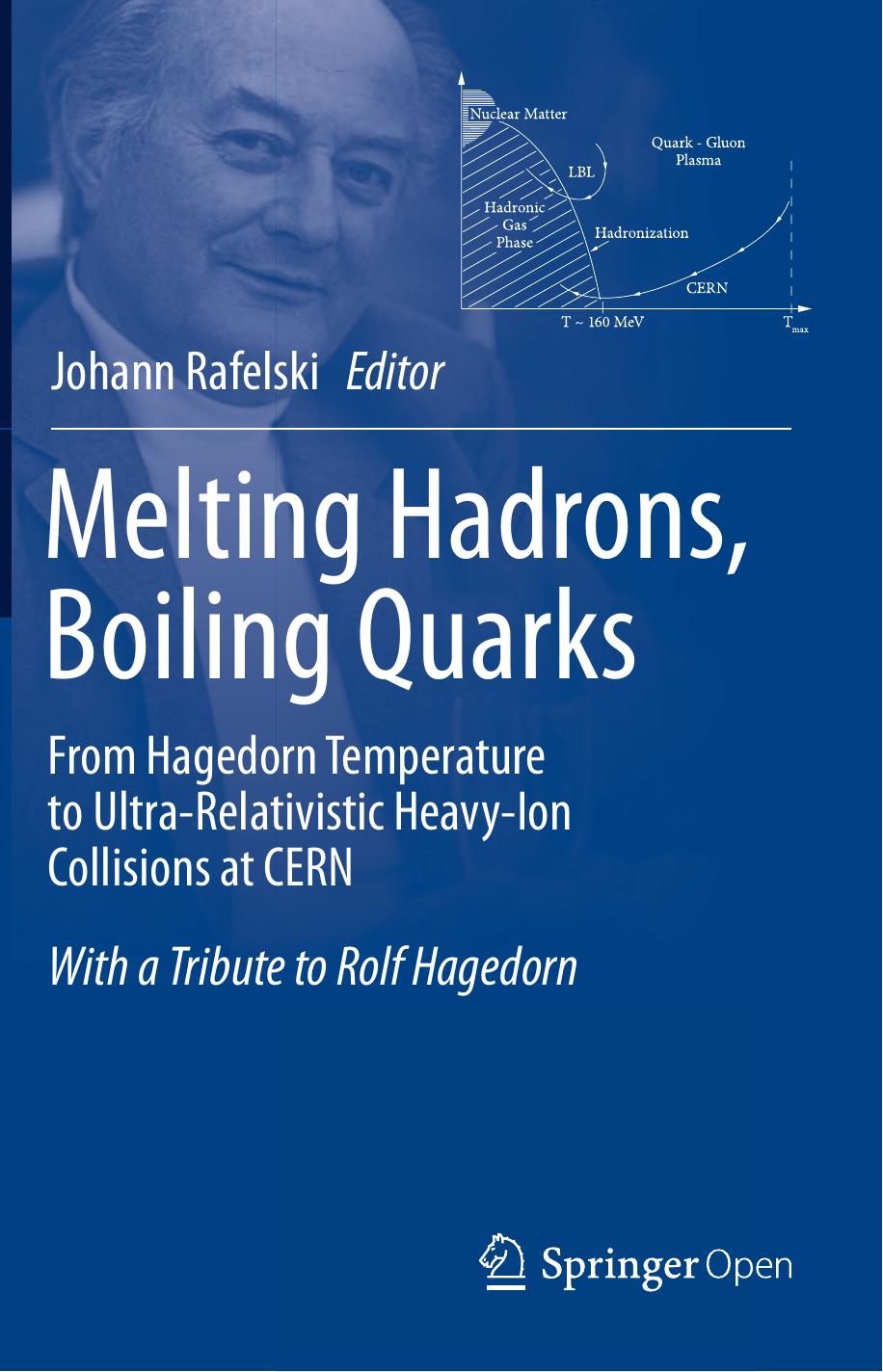Melting Hadrons, Boiling Quarks - From Hagedorn Temperature to Ultra-Relativistic Heavy-Ion Collisions at CERN by Johann Rafelski

Author:Johann Rafelski
Language: eng
Format: epub, pdf
Publisher: Springer International Publishing, Cham
The densities of the energy levels become in our units
(19.40)
and with
we obtain
(19.41)
As we decided to treat the longitudinal and the transverse motion independently, there is no reason to insist that the two temperatures associated with these motions should be equal. Since our old T 0 equals (π 2∕V 0)1∕3, we see that T ⊥ 0 ≈ T 0 and T ∥ ≈ γ3T 0. To every high energy collision in which both energies E ∥ and E ⊥ are large (i.e., where total c.m. energy and momentum transfer are ), we would again ascribe a temperature ≈ T 0. We would, however, associate this temperature with the transverse motion only and provide another temperature ≈ 3γ T 0 for the longitudinal one.
Is this picture justified? It is well known (see, e.g., [16]) that a consistent description of scattering should employ wave packets—aimed at each other—rather than plane wave states. A plane wave state would be non-localized and T would be zero (it would be zero for every completely non-localized state, whether or not is sharp), but a scattering experiment is equivalent to a position measurement of the colliding particles with the high precision of the linear dimensions of the order of . In that case we could ascribe a temperature to the localized wave packets before the collision. Let us then make the rather unconventional speculation and imagine that we could—on the basis of our considerations in Sect. 19.3—ascribe to the (localized) incoming particle (in its rest system) a temperature , which depends, as we saw, neither on the number of particles in a volume nor on the energy, but only on the volume. The (localized) hadron would then have a ‘temperature’ and only the conservation laws forbid it to radiate off mesons and nucleon–antinucleon pairs, etc. We may think of being the temperature of the cloud of virtual particles. The conservation laws would play the role of a box with rather rigid walls in which the virtual particles are enclosed and which they cannot leave. In the rest system of the nucleon, the energy spectrum of these virtual particles is isotropic; for the momentum distribution in the forward direction of the incoming nucleon, one has
Download
Melting Hadrons, Boiling Quarks - From Hagedorn Temperature to Ultra-Relativistic Heavy-Ion Collisions at CERN by Johann Rafelski.pdf
This site does not store any files on its server. We only index and link to content provided by other sites. Please contact the content providers to delete copyright contents if any and email us, we'll remove relevant links or contents immediately.
| Atomic & Nuclear Physics | Particle Physics |
The Complete Stick Figure Physics Tutorials by Allen Sarah(7307)
Secrets of Antigravity Propulsion: Tesla, UFOs, and Classified Aerospace Technology by Ph.D. Paul A. Laviolette(5309)
Thing Explainer by Randall Munroe(3877)
The River of Consciousness by Oliver Sacks(3536)
The Order of Time by Carlo Rovelli(3145)
How To by Randall Munroe(3032)
A Brief History of Time by Stephen Hawking(2960)
I Live in the Future & Here's How It Works by Nick Bilton(2935)
The Great Unknown by Marcus du Sautoy(2646)
What If?: Serious Scientific Answers to Absurd Hypothetical Questions by Randall Munroe(2637)
Midnight in Chernobyl by Adam Higginbotham(2483)
Blockchain: Ultimate Step By Step Guide To Understanding Blockchain Technology, Bitcoin Creation, and the future of Money (Novice to Expert) by Keizer Söze(2445)
Networks: An Introduction by Newman Mark(2360)
The Meaning of it All by Richard Feynman(2299)
Easy Electronics by Charles Platt(2281)
The Tao of Physics by Fritjof Capra(2229)
Midnight in Chernobyl: The Untold Story of the World's Greatest Nuclear Disaster by Adam Higginbotham(2177)
When by Daniel H Pink(2082)
Introducing Relativity by Bruce Bassett(2076)
